The other week, on the Friday before Tu B’Shvat, I went on a nice guided tour of the Ramot Forest in northwest Jerusalem with my friend Adam Ota. Provided by Ramot for the Environment, a group dedicated to preserving the natural areas outside the Ramot neighbourhoods, this trip was under the guidance of Hilary Herzberger, a local resident and activist, and Shmulik Yedvab, a zoologist from the Society for the Protection of Nature in Israel (or, SPNI).
We gathered that morning at an interesting hedgehog-themed childrens park and then had an introductory talk before setting off into the urban-surrounded wilderness. We were all expecting to get a glimpse of the seventy or so mountain gazelles that call the park home, yet there was much more to be seen. We started off with glimpses of Eurasian jays, Persian cyclamens and then the upturned dirt mounds of an subterranean mole-rat in the area wooded with pine trees.
Leaving the pine trees, we ventured onto a dirt trail skirting the terraced land with planted olive tree saplings. Recently I learned that a large portion of the land surrounding Jerusalem is terraced for agricultural purposes, hard work done throughout history. Shmulik informed us that he had scouted ahead and found a small herd of gazelles, which we were heading to see, but paused along the way to show us elongated heart-shaped tracks in the soft orange-brown dirt.
We learned about a project that Shmulik was involved in with the setting up of trail cams in this area to document local fauna, with an infrared option for nighttime documentation. What surprised the researchers the most was the discovery of wild boars, which is interesting because wild boars are quite common is many parts of the country, yet hadn’t been spotted in this area before the trail cam footage reveal.
It was shortly after this that I pieced together who he was, and that I’ve been seeing his posts on the Israel wild mammals Facebook group for a good while now. Only three days before this trip, Shmulik posted a trail cam video clip with footage of a Blanford’s fox – an extremely elusive fox species that was only discovered in Israel in 1981, somewhere out in the Negev wilderness (see HERE). Speaking of videos, there’s a beautiful nature video of this very area from two winters ago, filmed by the talented Amir Balaban, naturalist and founder of the Jerusalem Bird Observatory (see the video HERE).
It was along this trail that Hilary pointed out the parasitic mistletoe adorned some of the trees. There was a bush fire a year or two before and, as a result, many of the trees were burnt and mistletoe seized the opportunity to flourish. Despite being Tu B’Shvat, and the plethora of blossoming seen all around the country, most of the almond trees that we saw were burnt beyond repair, some with burnt almonds adorning their blackened branches. Approaching the terraces on the right, with pine trees on the left, we spotted the small herd of gazelles grazing – with the dominant male on guard.
We learned about the importance of staying on the trails with these skittish creatures – and a tragic incident when a photographer ventured too close and scared off a male gazelle which “escaped” into the territory of a different male, and thereby met his death. We didn’t scare off any gazelles right then and there, but I did notice a fine looking male chaffinch in the pine trees.
Continuing around to skirt the Neftuach lookout, we passed a few chukars, fennel plants and other interesting flora before reaching the end of the trail, with a view of the new rail bridge for the Tel Aviv-Jerusalem line, passing over Nachal Soreq.
To the right of the bridge in the Arab village of Beit Iksa, which we learned may have been named after the Roman Tenth Legion (or, Legio X in the original Latin) – the name meaning “House of Iksa” in Arabic, and “Iksa” meaning “X”.
It was there that we said farewell to Shmulik and Hilary, and were taken over by another guide to see ancient ruins in the so-called Biblical Garden, in the pine forest area. We started with the first of six winepresses that date to the First Temple period – approximately 2,500 years ago. To make matters even more exciting, a Hasmonean coin was found in this particular winepress when rock-clearing was done to clean up the site.
The group settled down to hear more about the site, but Adam and I were still itching to get our adventure on. So we asked for directions and parted from our group to hike on over to the next site: the abandoned village of Lifta. But, before that, we owe a great thanks to Ramot for the Environment for providing us with a great morning trip full of wildlife sightings and information – we wish them much success in their ongoing battle with housing development projects in keeping the park a wildlife sanctuary, like the way it is now.
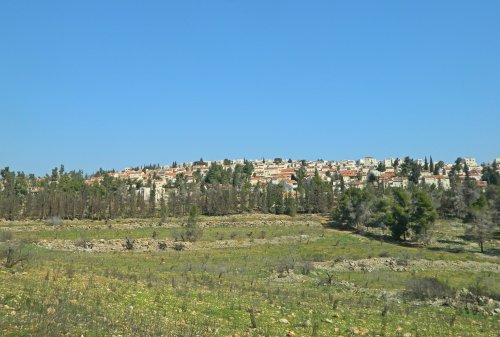

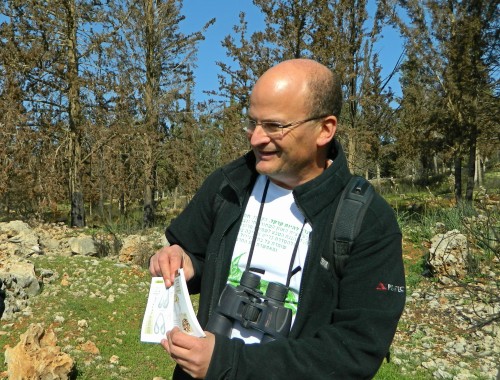
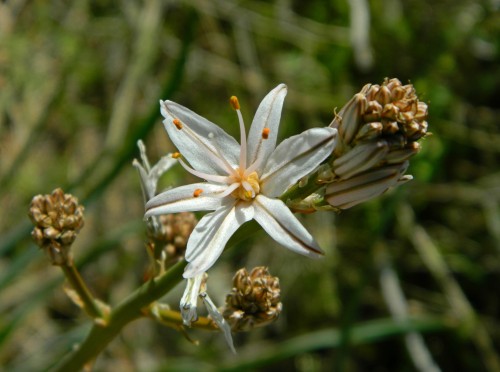

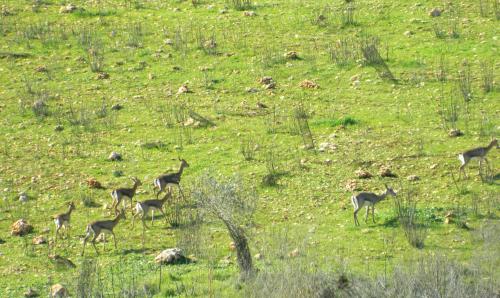

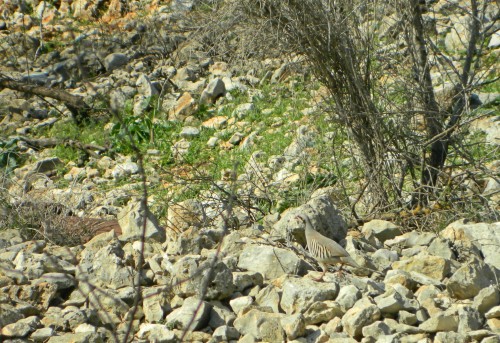
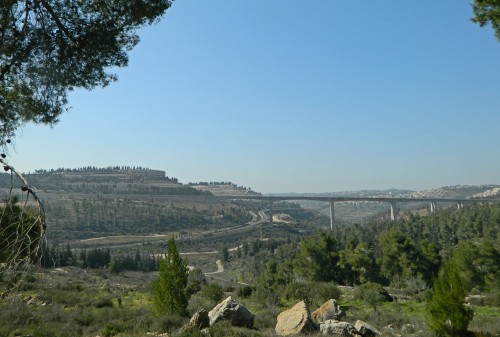
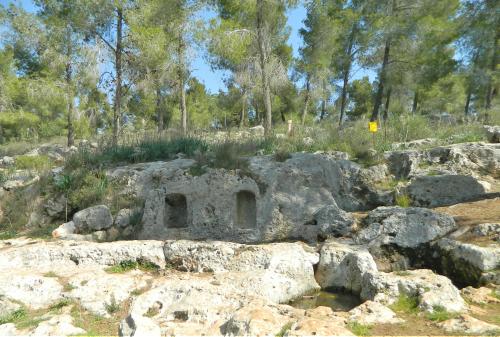
[…] from our tour of the Ramot Forest in northern Jerusalem, where we saw gazelles and ancient winepresses, my friend Adam and I headed […]
[…] few weeks ago, before all the fun of Purim, I took another trip to Jerusalem with my friend Adam Ota, and this time his brother Daniel tagged along. We were headed for the […]
[…] archaeological dig, led the trip to some important Bronze and Iron Age remnants found in Jerusalem. Riding in a minibus, we entered the capital from the north and made our way to Jaffa Gate where […]
[…] The building’s origins date to the Roman times when a large cistern was constructed over an underground spring, an eared tablet citing the Tenth Legion (which was camped in the area outside Jerusalem) still visible in the wall. A thousand or so years later a Frankish church was built over the cistern, which was subsequently turned into the crypt, and extravagant frescoes were illustrated on the walls. Controlled by the Hospitallers, a fellow Order of the Templars, the church was conquered by Saladin but not destroyed. Since restored, the church has been instilled with new life, with visitors of all religions visiting to see the original Crusader-era frescoes on the walls in the Gothic-vaulted chapel. Leaving the dominion of the church, we passed the old mosque of Abu Ghosh and then rode our tour bus out of the village, passing the expansive Akhmad Kadyrov Mosque – Israel’s second-largest mosque, a $10 million project largely funded by the controversial ruler of Chechnya, Ramzan Kadyrov. Our next stop was Nabi Samuel located on a hilltop just north of Jerusalem, not far from Ramot Forest. […]
[…] Bracha’s folks live, and was, in fact, the last wild leopard to be hunted in the mountains of the Jerusalem […]